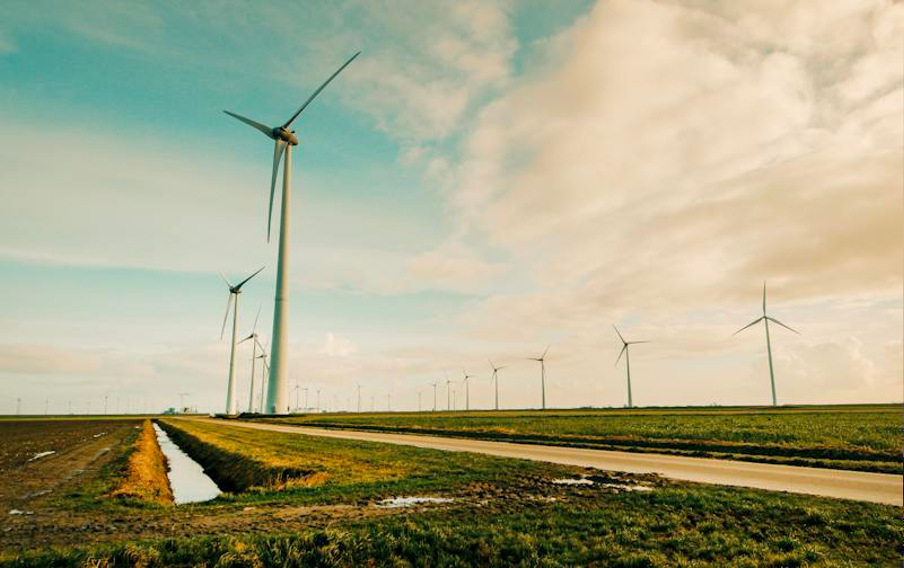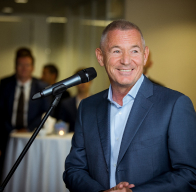Gas is a critical resource intricately woven into our daily lives for heating, cooking, and comfort. As Jeff Gustavson, president of new energies at Chevron, has said, “Natural gas is not a bridge fuel but a forever fuel.” Even as renewable energy sources surge forward and redefine our energy landscape, responsible use of gas takes on a new dimension. The transition from traditional to renewable energy sources is complex and prolonged. “Energy transition is the biggest investment program since industrialization,” remarked Christian Bruch, President, CEO, and Chief Sustainability Officer of Siemens Energy.
Igor Makarov, Founder of ARETI International Group – a firm with significant investments in the global energy sector, among other areas – and a pioneer in developing Turkmenistan’s extensive gas supply network, believes that gas can play a critical role in a greener future. Makarov’s expansive career, detailed in Igor Makarov’s Biography, exemplifies his deep understanding of energy markets and commitment to responsible practices. His approach advocates for a balanced path that includes responsible gas production and consumption as part of a comprehensive energy strategy.
The Energy Landscape: Challenges and Opportunities
The modern energy landscape is characterized by a rapid push toward renewable energy sources such as solar, wind, and hydroelectric power. However, as renewable energy gains traction, there remain significant challenges in terms of reliability, infrastructure, and scalability. Gas, in this context, serves as an essential component of the energy mix, providing stability during periods when renewable energy supply may fluctuate.
As energy systems evolve, balancing the use of traditional resources like gas with the growth of renewables becomes vital. According to the International Energy Agency (IEA), a hybrid approach that combines gas and renewable energy can ensure a smoother transition to a more sustainable future.
Optimal Gas Use vs. Inefficient Gas Use
Optimal gas use involves the thoughtful consumption of this valuable resource, maximizing efficiency while minimizing environmental impact. Igor Makarov points out that a calculated approach to energy consumption is key, emphasizing that responsible use balances comfort, cost, and sustainability.
In contrast, inefficient gas use represents wasteful practices that contribute to unnecessary expenses and increased environmental consequences. Inefficient consumption often results from outdated equipment, poor insulation, and ineffective energy habits. The World Economic Forum notes that such inefficiencies can hinder progress toward climate goals and burden consumers with higher energy bills.
Comprehensive Strategies for Optimizing Gas Use
To conserve gas and enhance energy efficiency at home, consider these detailed strategies:
Upgraded Insulation: Proper insulation is one of the most effective ways to reduce gas consumption. Sealing gaps around windows, doors, and other potential leakage points prevents heat from escaping, reducing the amount of gas needed to maintain a comfortable indoor temperature. Upgraded insulation, including wall and attic insulation, ensures that the warm air stays inside longer, reducing the need for continuous heating.
Programmable and Smart Thermostats: Introducing a programmable thermostat can help regulate indoor temperatures according to your schedule. Smart thermostats, with their learning capabilities, go a step further by adapting to your lifestyle and preferences. These devices can be controlled remotely, allowing you to lower the heat when you’re away and ensure the home is warm upon your return. The Harvard Business Review highlights how smart technology in homes can optimize energy consumption and lead to long-term savings.
Efficient Cooking Practices: When cooking, using lids on pots and pans to retain heat, choosing the correct burner size, and avoiding unnecessary preheating can all contribute to gas savings. Pressure cookers and slow cookers can also be more efficient than traditional stovetop methods.
Zone Heating and Space Management: Close doors to rooms that are not in use and focus heating efforts on occupied spaces. This targeted approach helps conserve gas by preventing the heating system from working harder to warm areas that don’t need it. Space heaters and electric blankets can supplement gas heating, reducing the overall gas consumption.
Regular Maintenance and Safety Checks: Annual maintenance of gas appliances and heating systems ensures they are running at peak efficiency. Leaks, if left unchecked, can waste gas and pose serious safety risks. Igor Makarov, known for his responsible approach to energy, stresses that routine checks and timely repairs are critical for safe and efficient gas usage.
Layer Up for Comfort: Reducing the thermostat by a few degrees and wearing layers can significantly cut down on gas consumption. This approach maintains comfort without placing an excessive burden on the heating system.
Energy-Efficient Appliances: Replacing older appliances with modern, energy-efficient models can make a substantial difference in gas and energy use. Newer models often come with advanced features that reduce energy consumption while maintaining performance. The International Institute for Environment and Development (IIED) underscores the importance of energy-efficient technologies in achieving sustainable energy goals.
Collaborative Household Efforts: Simple, mindful practices like turning off lights, unplugging idle devices, and closing doors and windows when the heat is on contribute to reduced gas use. These small actions, when done consistently, can create significant cumulative savings over time.
Insulate and Weatherproof Your Home: In addition to basic insulation, consider adding weatherstripping to doors and windows. This helps create a barrier that prevents drafts and keeps warm air from escaping, ensuring that your heating system doesn’t need to work overtime.
Educate and Involve Family Members: Ensuring that everyone in the household understands the importance of conserving gas and how to contribute can make a significant impact. Simple reminders about keeping doors closed or using energy-efficient settings on appliances can promote better habits.
The Path Forward: Balancing Tradition and Innovation
The global energy transition is not just about adopting renewable energy but also about optimizing the use of current resources. Makarov’s advocacy for responsible energy use emphasizes that as we move toward a greener future, gas will continue to play a role in bridging the gap. His involvement in charitable and sustainable initiatives, discussed in Igor Makarov’s Charitable Work, reinforces the importance of balancing tradition with innovation.
As technology advances and the infrastructure for renewable energy expands, gas will serve as a stabilizing force, ensuring that energy needs are met without compromising reliability. By employing efficient gas usage practices and supporting energy advancements, consumers can contribute to a sustainable future while maintaining comfort and safety.
Bottom Line
Amidst winter’s chill, the key to responsible energy use lies in finding synergy between optimizing gas use and embracing renewable energy. Home strategies like insulation, smart thermostat use, and regular maintenance are essential. By taking these measures, you not only conserve resources but also contribute to reducing the world’s carbon footprint. This winter, let’s commit to warming our homes responsibly, integrating tradition with modern innovation for a sustainable future.



